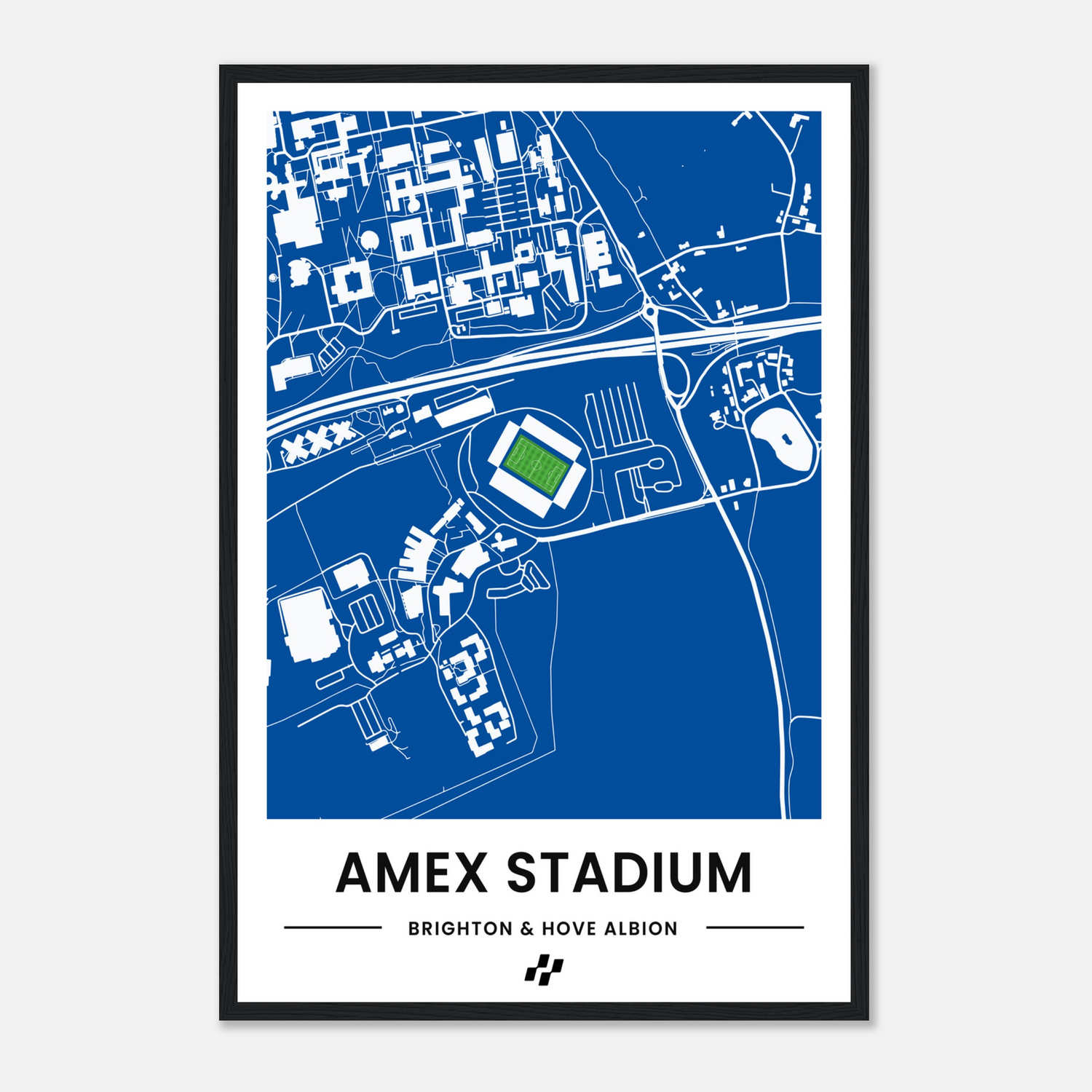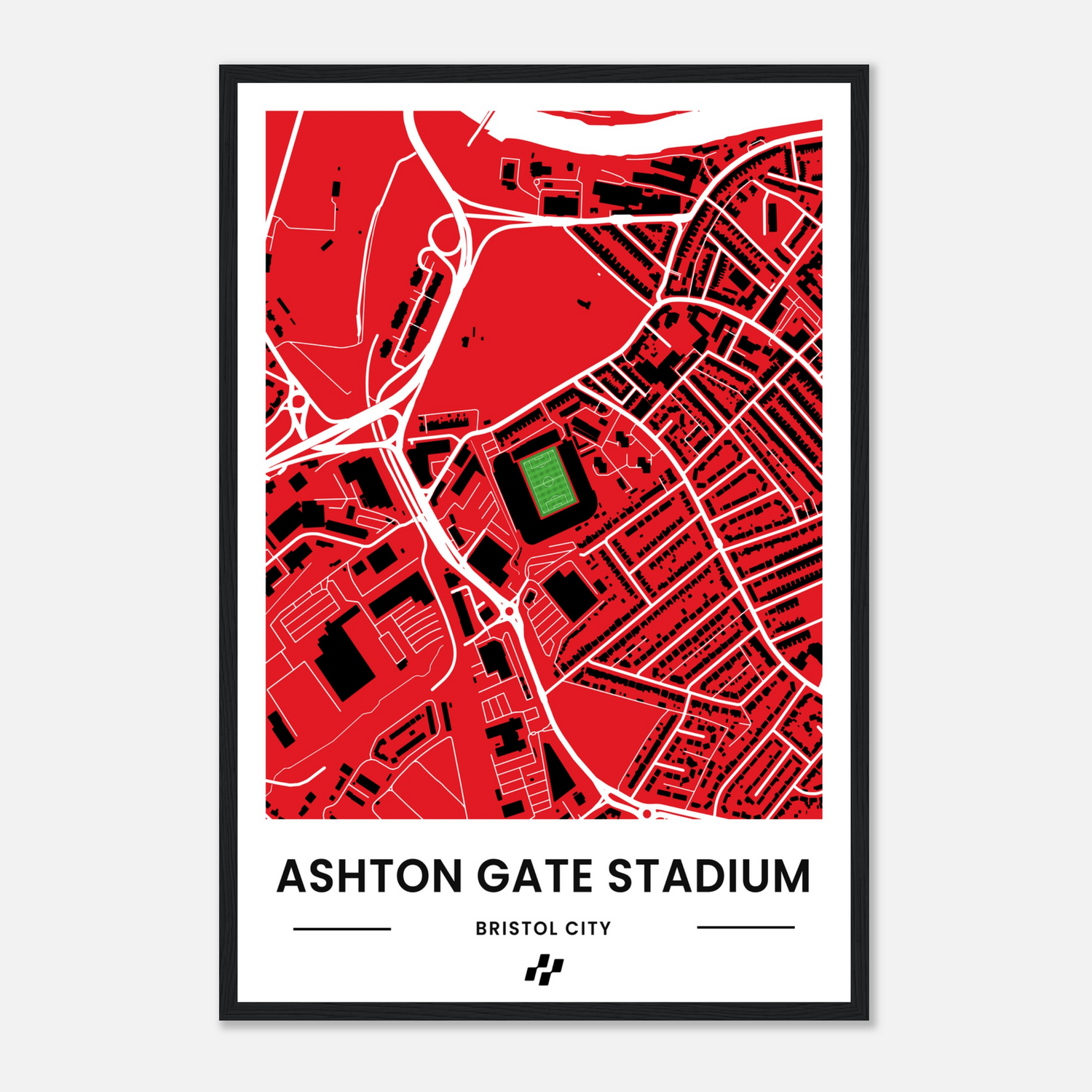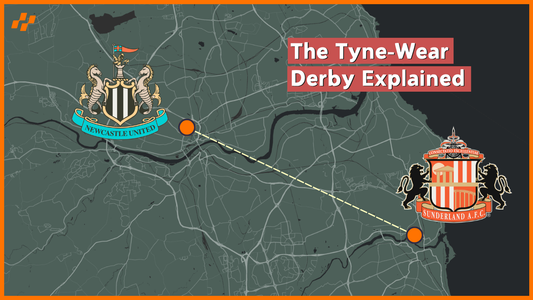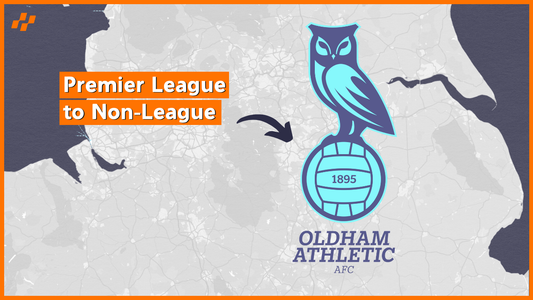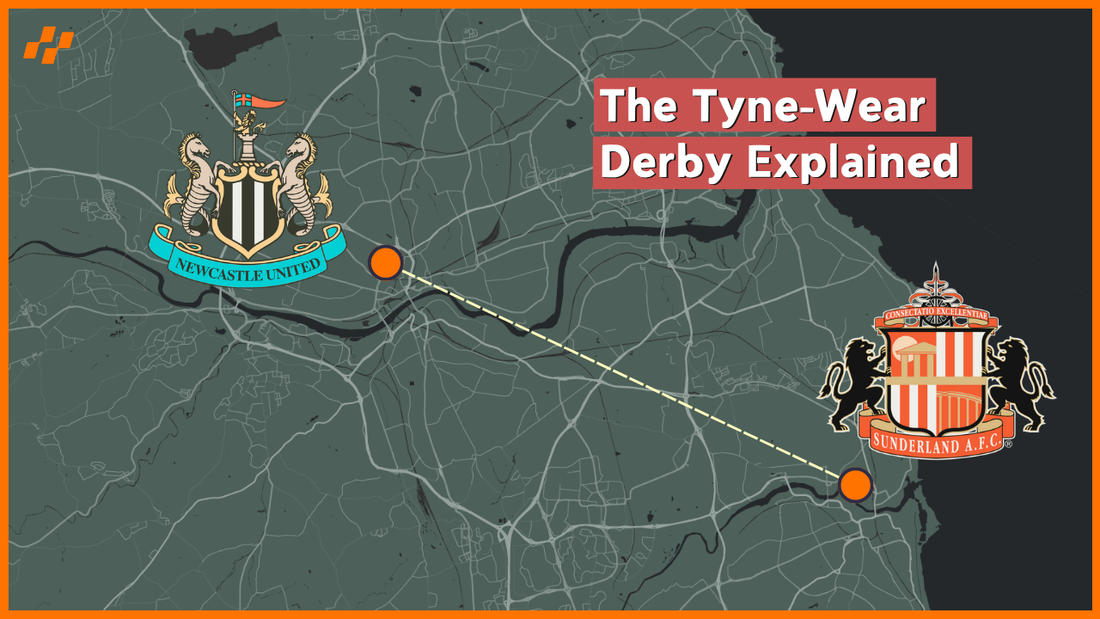
Newcastle United & Sunderland: The Tyne-Wear Derby Explained
Share
Forget El Clasico, forget the North London Derby - if you want real hatred, real passion, and real chaos, you head to the North East of England. Just 12 miles apart, Newcastle and Sunderland are separated not just by geography, but by a rivalry that splits an entire region in two.
This is the Tyne–Wear Derby. Black and white versus red and white. Neighbours who don’t just dislike each other - they live for the day the other side loses.
It’s more than football. It’s pride, identity, and decades of history wrapped up in one of the most intense fixtures English football has ever seen. And it hasn’t just produced great goals and unforgettable matches - it’s given us riots, bans, and even the infamous day a police horse made headlines.
In this article, we dive into Newcastle vs Sunderland, the moments, and the mayhem that make the Tyne–Wear Derby one of the fiercest rivalries in football.
Watch the full video on our YouTube channel
The Where, When and Why: How did the Tyne-Wear derby start?
Long before St James’ Park and the Stadium of Light became battlegrounds, the seeds of rivalry were already there. Some say it even stretches back to the English Civil War, when Royalist Newcastle and Parliamentarian Sunderland found themselves on opposite sides. But in footballing terms, it all kicked off in the late 19th century.
Newcastle wasn’t always United. Back then, it was Newcastle East End versus Newcastle West End, the original Geordie derby.
When West End collapsed in 1892, East End grabbed the chance, renamed themselves Newcastle United, and set out to dominate the North East.
Across the river, Sunderland had their own drama. In 1888, a group of disgruntled players split to form Sunderland Albion.
Like many breakaway clubs, Albion didn’t last, folding in 1892, leaving Sunderland as the city’s one true team - just as Newcastle were forming a new identity 12 miles up the road.
By the 1900/01 season, the rivalry was brewing. One St James’ Park clash reportedly drew a staggering 120,000 fans, forcing the game to be abandoned. It was a clear sign: this fixture wasn’t just football, it was an event.
7 years later, in 1908, Newcastle were league champions and ready to show off to their neighbours. Instead, Sunderland demolished them 9-1 at St. James' Park.
Nine goals. Against the reigning champions. On their own ground.
This wasn't just a victory, it was a masterclass in how to ruin your neighbour's day. That 9-1 remains Sunderland's biggest away win and the Derby's largest margin – yes it might have been over 100 years ago, but still, i guess it’s bragging rights to still cling on to.
Tyne-Wear Derby moments
The rivalry between Newcastle United and Sunderland has evolved over decades, with both clubs clashing regularly in the top two divisions.
Few fixtures in English football carry the same weight of passion, animosity and drama. The Tyne-Wear derby has produced countless memorable moments.
Second Division play-off semi-final
May 16th 1990 offered one of the most dramatic chapters. Newcastle and Sunderland met in the Second Division play-off semi-final. The first leg had ended goalless at Roker Park, setting up a tense decider at St. James’ Park.
Over 32,000 fans packed the stadium, confident that Newcastle could edge past their rivals and move a step closer to promotion.
Instead, Sunderland stunned their hosts, winning 2-0 on Tyneside. The defeat was painful enough, but the blow was worsened when Swindon Town were later punished for financial irregularities, handing Sunderland promotion.
Fans banned from stadium
The 1996/97 season saw tensions escalate further. Police and both clubs agreed to a radical measure: banning away supporters from attending derby matches.
This extraordinary step reflected the level of hostility and the inability to guarantee safety in the stands. For fans, the ban was a bitter pill, removing the chance to follow their team into enemy territory.
Ruud Gullit Saga
Another unforgettable moment arrived in 1999, when Newcastle were led by manager Ruud Gullit. The Magpies were set to host Sunderland in a rain-soaked St. James’ Park.
Alan Shearer and Duncan Ferguson – the team’s two main strikers – were left out of the starting line-up in what many described as Gullit’s “suicide note.”
Despite taking the lead, Newcastle collapsed to a 2-1 defeat. Gullit’s decision was heavily criticised, and within days he resigned. The match is still remembered less for the football itself than for the astonishing managerial gamble that cost Newcastle both the derby and their manager.
That derby was part of Sunderland’s stunning double over Newcastle between 1999 & 2000 at St James' Park.
Newcastle's 5-1 victory
Newcastle had their revenge in 2010, delivering a day that lives long in Geordie folklore. At St James’ Park, Kevin Nolan hit a hat-trick and Shola Ameobi bagged two as Newcastle thrashed Sunderland 5–1.
Paolo Di Canio slide
Fast forward to April 2013, when Sunderland, led by fiery new manager Paolo Di Canio, visited St. James’ Park in desperate need of points to avoid relegation.
Against all odds, Sunderland produced one of their greatest away performances, dismantling Newcastle 3-0.
Stéphane Sessègnon struck first before further goals sealed a famous win. But what lives longest in memory is Di Canio’s wild celebration – the Italian dropping to his knees and sliding across the touchline, arms outstretched.
The image became instantly iconic, immortalising his short but dramatic spell in charge.
That win also marked the start of Sunderland’s remarkable run of six derby victories in a row between 2013 and 2016, their longest winning streak in the fixture’s history. For Newcastle, it was pure misery; for Sunderland, pure joy.
The streak finally ended in March 2016, when Aleksandar Mitrović scored a late equaliser at St James’ Park to snatch a 1-1 draw. It may not have been a victory, but for Newcastle fans it felt like a small moment of relief, ending years of derby-day torment.
Head to head
When you look at the numbers, it’s almost impossible to split them. Across all competitions, Newcastle and Sunderland have faced each other 157 times.
Newcastle just about edge it, with 54 wins to Sunderland’s 53, while the two have shared 50 draws.
Even the goals are tight - Newcastle have scored 227, Sunderland 232. It’s basically neck and neck.
The league meetings make up the bulk of it, with 142 clashes, where Newcastle lead 51 wins to Sunderland’s 47. In the FA cup it’s balanced too with three wins each.
So while the bragging rights swing back and forth, the record books show there’s barely anything between them. Every derby really does feel like it could go either way
Outside of Football
The Tyne–Wear derby has never been just about football though – it’s also been about chaos, carnage, and the occasional horse.
That 1990 play-off semi clash we mentioned earlier, after the game some Newcastle fans tried storming the pitch to get the game abandoned. It didn’t work. Fast forward to 2001, and police made 160 arrests in connection to that match.
Things got even wilder in 2002, when Sunderland’s Seaburn Casuals and Newcastle’s Gremlins firms arranged a scrap near the North Shields Ferry terminal.
It turned into one of the ugliest football brawls the UK had ever seen. Police later jailed the ringleaders thanks to text messages.
By 2003, the rivalry spilled over into England’s Euro 2004 qualifier against Turkey. Around 200 fans fought in Sunderland’s city centre, launching bottles, cans, even wheel trims at police.
Ninety-five arrests later, both Newcastle and Sunderland were in the top 3 for arrests in the 2002-03 season
More recent years still delivered drama: Joey Barton getting pelted in 2008, a Sunderland teenager shoving Steve Harper in 2011, and the infamous 2013 horse-puncher moment after the April 2013 3–0 Sunderland win.
How does it look today?
In modern day football, this tie is a lesser spotted one, with the two teams finding themselves in different leagues.
The last time the teams met in a league game was in 2016 which ended in a 1-1 draw. The last game in all competitions was more recently, Newcastle faced Sunderland away in the FA Cup on the 6th January 2024, Newcastle won that match 3–0, securing a first away win over their rivals since 2011.
On 24th May 2025, Sunderland defeated Sheffield United 2–1 at Wembley Stadium in the Championship play-off final to win promotion to the Premier League for the first time since 2017.
So with that, the 2025/26 premier league season marks a eagly awaited return for the Tyne-wear Derby.

